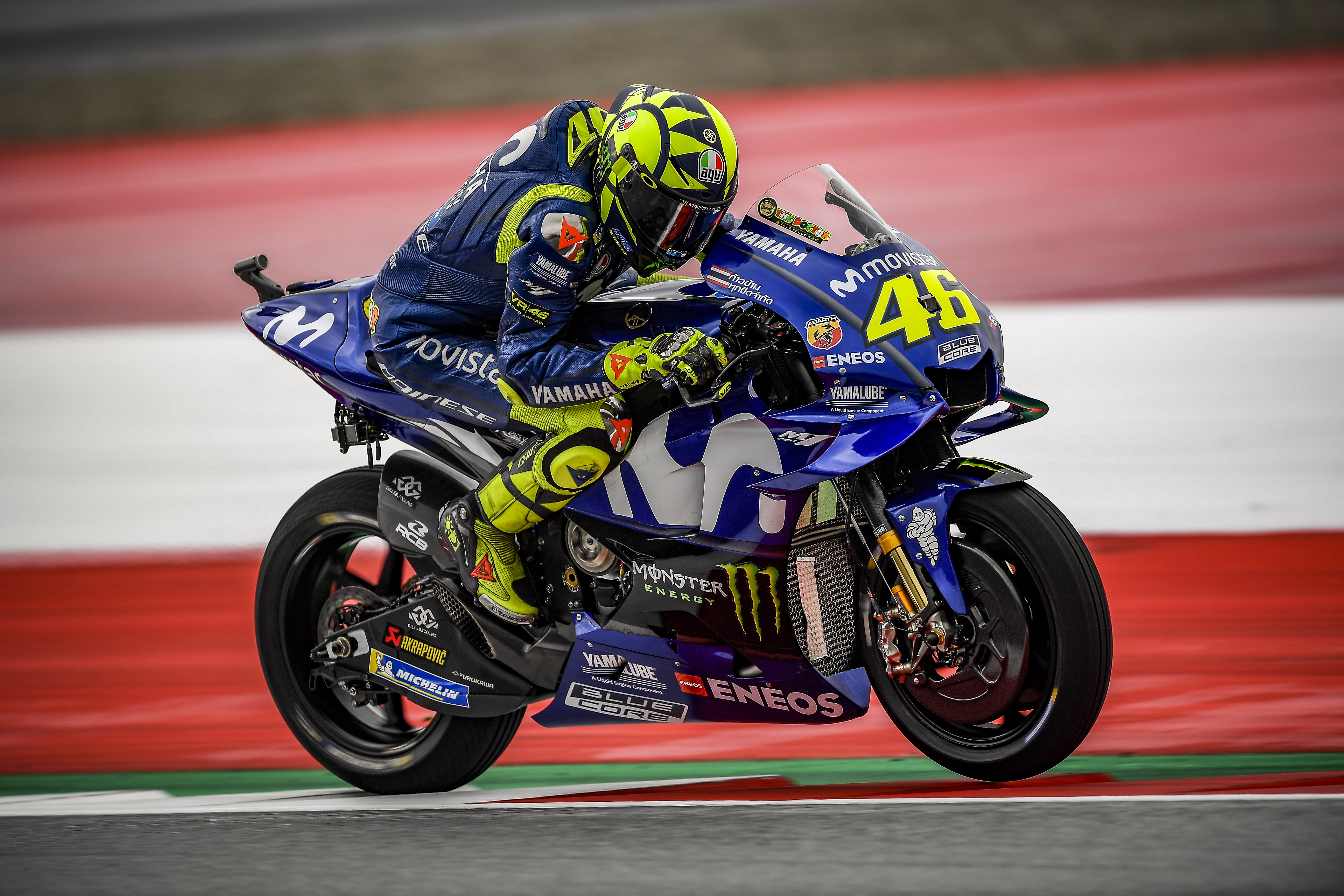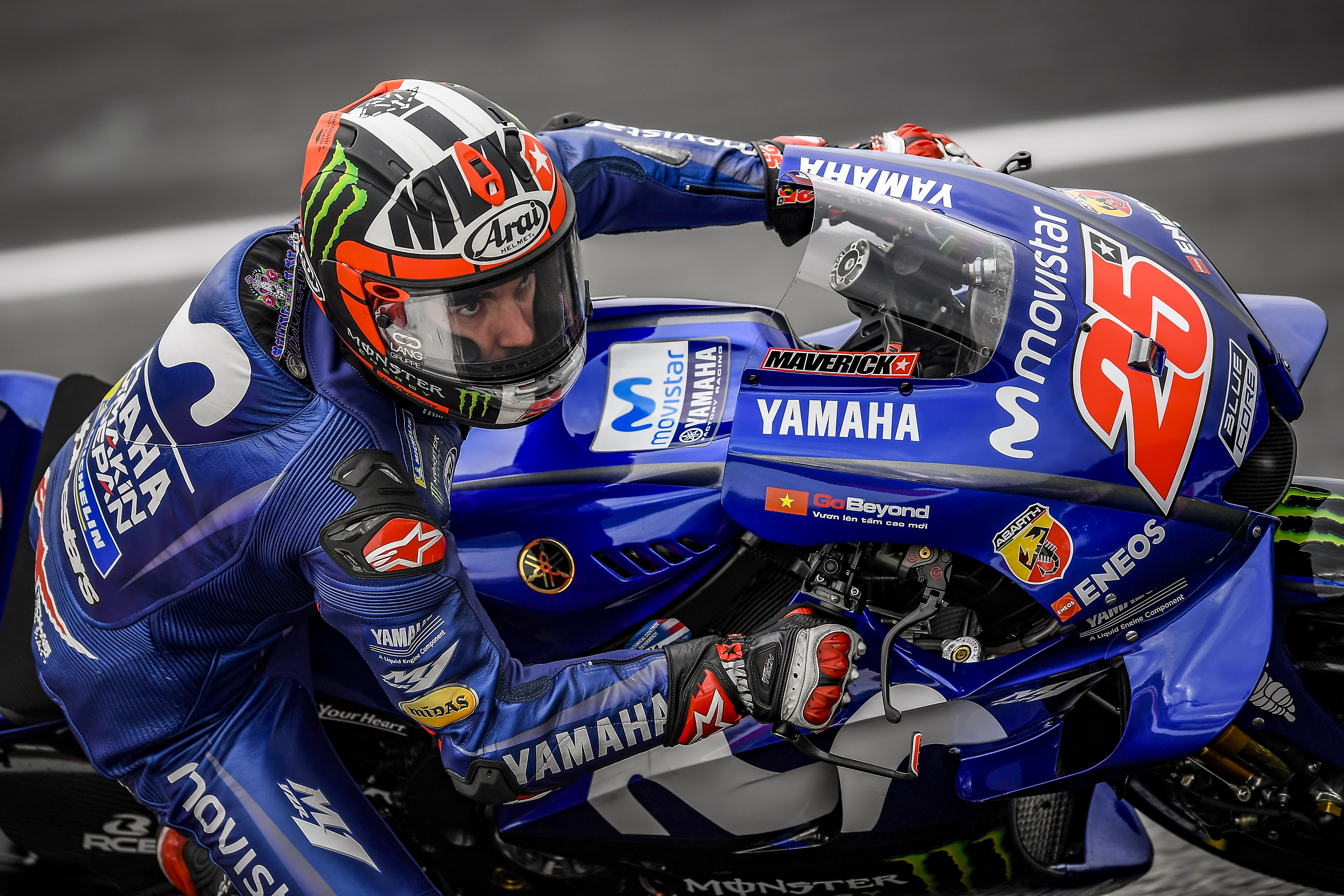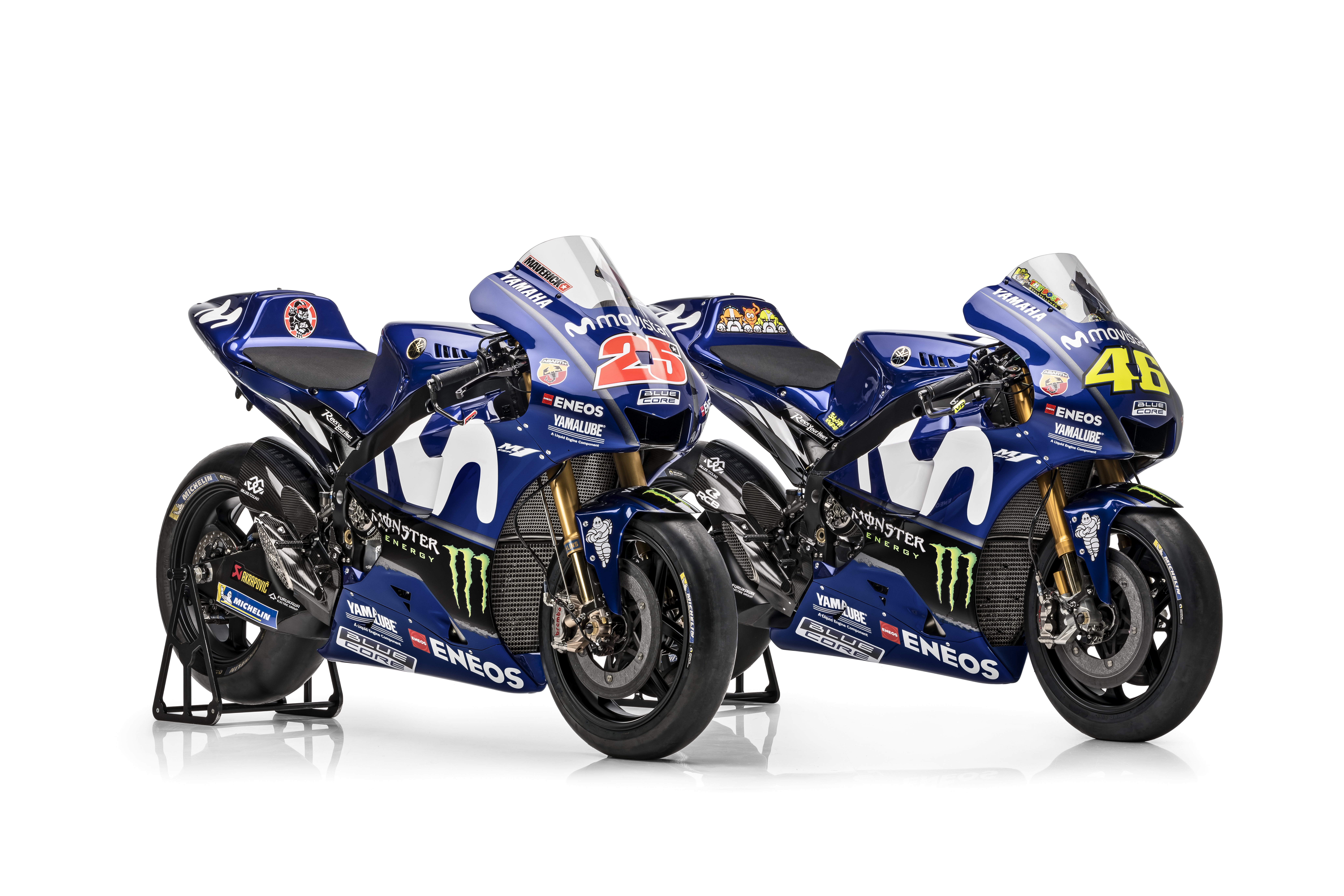The Austrian Grand Prix weekend was a complete disaster for Yamaha, there is no other word. Both on the track and off it, Yamaha’s weekend at the last Grand Prix was nothing short of embarrassing. Hampered by a mechanical in the only dry free practice, FP1, Valentino Rossi failed to make Q2 directly from free practice, and could only manage fourteenth on the grid, complaining that the soft tyre was too soft for the Yamaha. Meanwhile, Maverick Vinales was only eleventh on the grid, suffering with sensor problems. This Saturday slump led the MotoGP project leader, Kouji Tsuya, to apologise to both the manufacturer’s factory riders for the poor performance of the bike, promising improvements are on the way in two upcoming tests.
One of those tests – in Misano – has already been and gone. We will only find out whether there was any progress on Friday, but for the sake of the manufacturer, you would hope that there have been some positive findings.
So, we know the situation, some have described this as “rock bottom” for Yamaha. They sit second in the riders championship with Valentino Rossi, third in the manufacturers’ standings, 53 points from the Honda at the top; and third in the teams’ championship with twelve points between the Movistar team and the Repsol Honda outfit. The numbers don’t seem so bad, and that is because the M1, despite many contrary opinions, has improved in some areas this year, and this has allowed it to be strong in some circuits. However, the neglection of the core issue with the bike means that in the places where the M1 was weak last year, it is weaker this year, because everyone else has moved on. So, whilst the balance of the bike has improved compared to last year, and the M1 is back to being the smooth, high-corner-speed bike we know it as, the electronics have not progressed – or not progressed enough – which in this era of MotoGP is the most critical part.

As Rossi mentioned before Austria, the Red Bull Ring is the M1’s worst circuit, the slow speed corners followed by long straights is the worst combination for it, because it can’t use its corner speed, and its acceleration issues are emphasised. So it is likely that in the coming weekends the M1 will seem in a good way again, but that won’t mean that the issues are solved, just that they are masked by the circuit layout.
But where did this start? We know the situation Yamaha are in at the moment – their worst moment since 1998 – but where did this path start? Why are they in this hole?
It’s possible to trace the root of their issues back to 2015. The M1 was the best bike in 2015, no doubt about it. The bike was the best out of the box in Qatar for the first race, and the developments Yamaha brought to the bike throughout the year almost always worked. But there was one issue, a familiar one: rear tyre wear. Yamaha were able to get around this three years ago because they had the luxury of factory electronics, designed specifically for the M1, and understood perfectly by the engineers in Iwata.
With the introduction of the universal, spec ECU in 2016, though, Yamaha became complacent. They heard “controlled electronics” and took that as gospel, putting less effort than their competitors – notably Honda and Ducati – into developing and understanding the Magneti Marelli software. Whilst their two biggest rivals went out and poached engineers from Marelli themselves, and the likes of Suzuki sent their own engineers to Italy to learn the functions of the controlled software, Yamaha didn’t act, and worked on the new system themselves, with no external assistance.
Instead of focusing on electronics, Yamaha looked at the chassis, the motor and the aerodynamics of the M1. The first item they introduced to combat the tyre wear issues was a new chassis, at the post-race Valencia test at the end of 2015. It didn’t work, neither Jorge Lorenzo nor Valentino Rossi liked the update, which had the fuel tank mounted further back in the bike, with the fuel going into the bike in the tail section, behind the seat. So, the 2016 chassis was essentially the 2015 chassis, with some slightly bigger wings on the front. However, the 2015 chassis was by far the best on the grid in 2015, meaning that in the first half of 2016, the Yamaha was still the best machine out there, and was only missing the championship lead through reliability (Rossi’s blow up in the Mugello race – and Lorenzo’s in warm up the same day – were supposedly due to a mapping problem on the electronics which allowed the bike to over-rev over the crest, with disastrous consequences) and rider error.
From the halfway point of the 2016 season, though, when Honda and Ducati started to see the fruits of their labour with regards to the electronics, Yamaha started to fall back, unable to make the tyre last the distance. The first time it really became apparent was in Aragon, where Rossi led the early stages, but was hunted down by Marquez with ease once the tyres started to drop slightly. This set the tone for the rest of the season, with Yamaha not winning until Valencia of that year, and even then Lorenzo was closed down hand over fist by Marc Marquez in the final laps of the race.

The degradation issues with the rear that the M1 was suffering with in the second half of 2016 prompted Yamaha to go full revolution – in MotoGP terms – with the 2017 bike. Initially, it looked like they had got it right. Rossi was struggling a lot through free practices, but was able to find something for Sunday, whilst Vinales looked almost unbeatable in the first portion of the season – only denied a sweep of the first three races by a crash in Texas, and even that handed Rossi the championship lead. Everything looked good for Yamaha as the championship entered the European season, but it was in Jerez, where Vinales finished sixth and Rossi only tenth, that it started to decline for the Movistar team. Another poor result in Barcelona (Rossi 8th, Vinales 10th) showed the extent of Yamaha’s misdirection, especially as Rossi had won in both Jerez and Barcelona the previous year, and there had been no changes to either circuits.
New chassis’ arrived for the pair to test in the post-race test in Montmelo 2017, supposedly the 2017 chassis with some 2016 bits (stiffness ratios, for example) and Rossi felt that one in particular was an improvement. Supposedly Vinales preferred the original 2017 design, but he was forced into using the one that Rossi had chosen, a decision which haunted Vinales’ mind for the rest of the season.
Rossi won the next race, and it seemed all was well once again, but wet weather nightmares, and poor dry pace regardless, in Sachsenring proved otherwise. Another string of poor results in the second half of 2017, and a terrible weekend in Valencia, sent the team to do what they had been avoiding for half a season, and they switched overnight to the 2016 chassis. No setup time meant that they had no pace in the race, and it was another disastrous result for the factory team, made no better by the fact that Johann Zarco on the Tech 3 Yamaha was fighting for the victory against Dani Pedrosa.
The post-race Valencia test in 2017 saw all manner of different combinations in both the factory Yamaha garage, and the Tech 3 pit, as they tried to find a direction for 2018. Ultimately, they reverted to the 2016 design for their base, but once more over the winter there was a lack of investment in the electronic side, and from the first tests of the 2018 preseason, it was clear that the M1 was still a way off being able to win a race.
Now, though, it is clear that the problem lies not only in the electronic side of the Yamaha, but in other areas too.
A new engine was introduced over the winter, liked by both riders and thus homologated. Furthermore, it is believed both Honda and Ducati has had continued development over the last months, whilst Yamaha has remained stagnant in this area.
The engine, though, is perhaps the most immediate issue. Fundamentally, Yamaha messed up with the design of this year’s engine, and the crankshaft is too light, meaning the engine is too aggressive. It is the same thing which caused Honda so many problems in 2015 and ’16, and the most critical problem Suzuki faced last year. The biggest problem for Yamaha is that they cannot change the engine until the winter, for now they have to make do with what they have, and what they have is not good enough.
On the organisational side, this could prove just as fatal as any mechanical or electronic issue with the M1. A full overhaul of the management and inner workings of the Iwata manufacturer could produce instability lasting for months and even years, putting them out of contention for titles for as long as that instability lasts. Without stability and progressive evolution inside the team, or the whole Yamaha MotoGP department, it becomes difficult to work correctly and make progress with the bike, because the new people have to fit together in the new system, and that takes time, especially when it is a reactionary move – and in this case, it would be most certainly reactionary on Yamaha’s part. That said, staying as they are resigns them to stagnation; to progress, they have to change the way they work, and just like with the engine, they have no choice.
A third issue appeared after Brno. A Ducati engineer explained that the key to the Michelin tyres is to use the drive grip, the centre of the tyre. They said that one of the reasons Yamaha are struggling at the moment, could be that they spend so much time on the side of the tyre. This is because the style of the Yamaha is to run a lot of corner speed, and to utilise the edge grip of the tyre. The problem is that this increases wheelspin, and thus tyre wear. This is especially worrying for Yamaha, because it means that they could face redesigning the entire motorcycle, completely changing their philosophy to comply with the demands of the Michelin.
Whilst this would be one of a number of things that stand between Yamaha and wining again, personally I hope this is not one that will be fleshed out. One of the biggest appeals of motorcycle racing is the diversity and variety, both in riding styles and design philosophies. If Yamaha were to go away from their traditional ‘corner speed’ bikes for the sake of tyres, it would be a shame, because it would essentially mean that to win, there is only one way, and that is not MotoGP, it is not MotoGP to me, anyway.
Neglecting the latest point, Yamaha still have a lot of work to do before they arrive at a Grand Prix in a state where they can win again. Starting with the engine, of which a 2019 spec should be in their final test day of 2018 in Aragon, after Silverstone, there are many aspects on which the engineers back in Japan have to work upon, and really it is doubtful that they will even be able to win consistently, if at all, next year. However, the (belated) announcement of a Yamaha European test team for next year shows they are on the right track, and are intent on solving their issues in the longer term.
For now, though; I tweeted on the day of the French Grand Prix that “If it (a Yamaha win) won’t happen today then it won’ t happen at all in 2018”, and right now that prediction seems fairly on the money.
Featured Image courtesy Yamaha Motor Racing

Leave a Reply